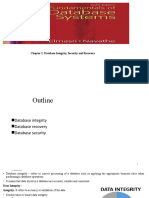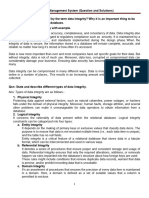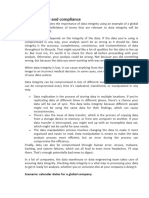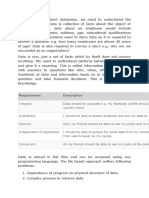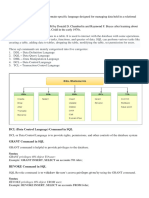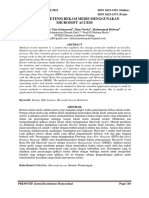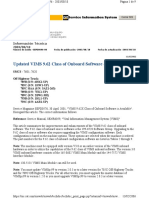0% found this document useful (0 votes)
18 views6 pagesWeek VI
The document discusses data integrity, emphasizing its importance for accuracy, reliability, and compliance with regulations. It outlines various types of constraints in Database Management Systems (DBMS), including domain, entity, and referential integrity constraints, which help maintain data quality and prevent errors. Additionally, it highlights risks to data integrity and methods to minimize these risks, ensuring operational efficiency and trust among stakeholders.
Uploaded by
maturay345Copyright
© © All Rights Reserved
We take content rights seriously. If you suspect this is your content, claim it here.
Available Formats
Download as DOCX, PDF, TXT or read online on Scribd
0% found this document useful (0 votes)
18 views6 pagesWeek VI
The document discusses data integrity, emphasizing its importance for accuracy, reliability, and compliance with regulations. It outlines various types of constraints in Database Management Systems (DBMS), including domain, entity, and referential integrity constraints, which help maintain data quality and prevent errors. Additionally, it highlights risks to data integrity and methods to minimize these risks, ensuring operational efficiency and trust among stakeholders.
Uploaded by
maturay345Copyright
© © All Rights Reserved
We take content rights seriously. If you suspect this is your content, claim it here.
Available Formats
Download as DOCX, PDF, TXT or read online on Scribd
/ 6



